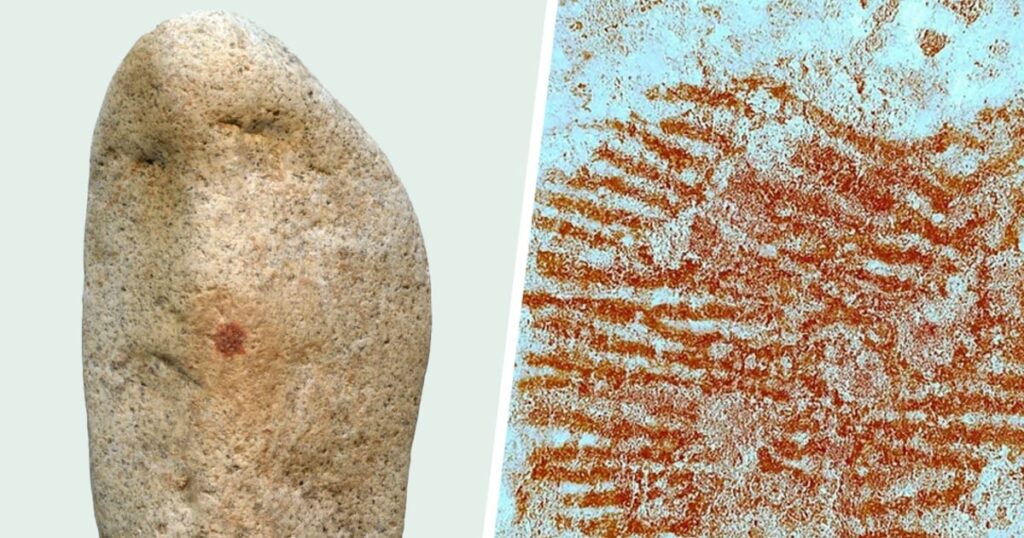
Researchers in Spain say they have found evidence that Neanderthals were capable of creating art — challenging the idea that art began with the modern humans who succeeded them.
The canvas was a quartz-rich granite pebble that was excavated from a rock shelter in central Spain in 2022, in a layer dating back between 42,000 and 43,000 years. Measuring more than 8 inches long, the pebble has curves and indentations that make it resemble a human face.
In the middle of its surface is a single red dot, right where a nose would be, researchers said in a study published Saturday in the journal Archaeological and Anthropological Sciences, adding that it appeared to be a non-utilitarian object rather than a tool.
“From the outset we could tell it was peculiar,” said David Álvarez-Alonso, lead author of the paper.
Analysis showed that the red dot consisted of ochre, a natural earth pigment. The next step was to determine how it got there.
While not visible to the naked eye, the red dot was confirmed by Spanish forensic police to be a fingerprint, leaving “no doubt” that it was applied to the stone intentionally by a finger dipped in ochre, Álvarez-Alonso, an archaeologist at Complutense University in Madrid, said in an email on Tuesday.
The researchers postulate that the Neanderthal, who based on the fingerprint was possibly an adult male, perceived the pebble as resembling a face — a psychological phenomenon known as pareidolia — and was inspired to complete the depiction, creating “one of the oldest known abstractions of a human face in the prehistoric record.”
“It would be a clear act of symbolization — apparently very simple, yet meaningful,” Álvarez-Alonso said.
The discovery is “doubly exceptional” since it’s the “most complete” Neanderthal fingerprint identified to date, apart from a partial one previously found in Germany, the researchers said.

Neanderthals, a distinct species that went extinct around 40,000 years ago, lived alongside early modern humans in Europe, Asia and the Middle East for at least part of their existence. Characterized by a large nose and relatively short and stocky bodies, the species is very closely related to humans, or Homo sapiens.
The remains of Neanderthals do not show clear evidence of lower intelligence than modern humans, some scientists have argued.
The stone is “one of a small but growing number of discoveries that point to the existence of symbolic behavior among Neanderthals,” Álvarez-Alonso said.
However, it’s “clearly an isolated object, with no known parallels” that can be used for comparison, he added.
“We should not try to draw direct analogies between the Neanderthal and sapiens worlds,” Álvarez-Alonso said, as Neanderthals did not create a visual symbolic system as complex and diverse as the one developed by Homo sapiens.
“This pebble doesn’t solve the mystery, but it offers one more clue suggesting the presence of a complex mind — one capable of producing symbols,” he said.
 Latest World Breaking News Online News Portal
Latest World Breaking News Online News Portal






